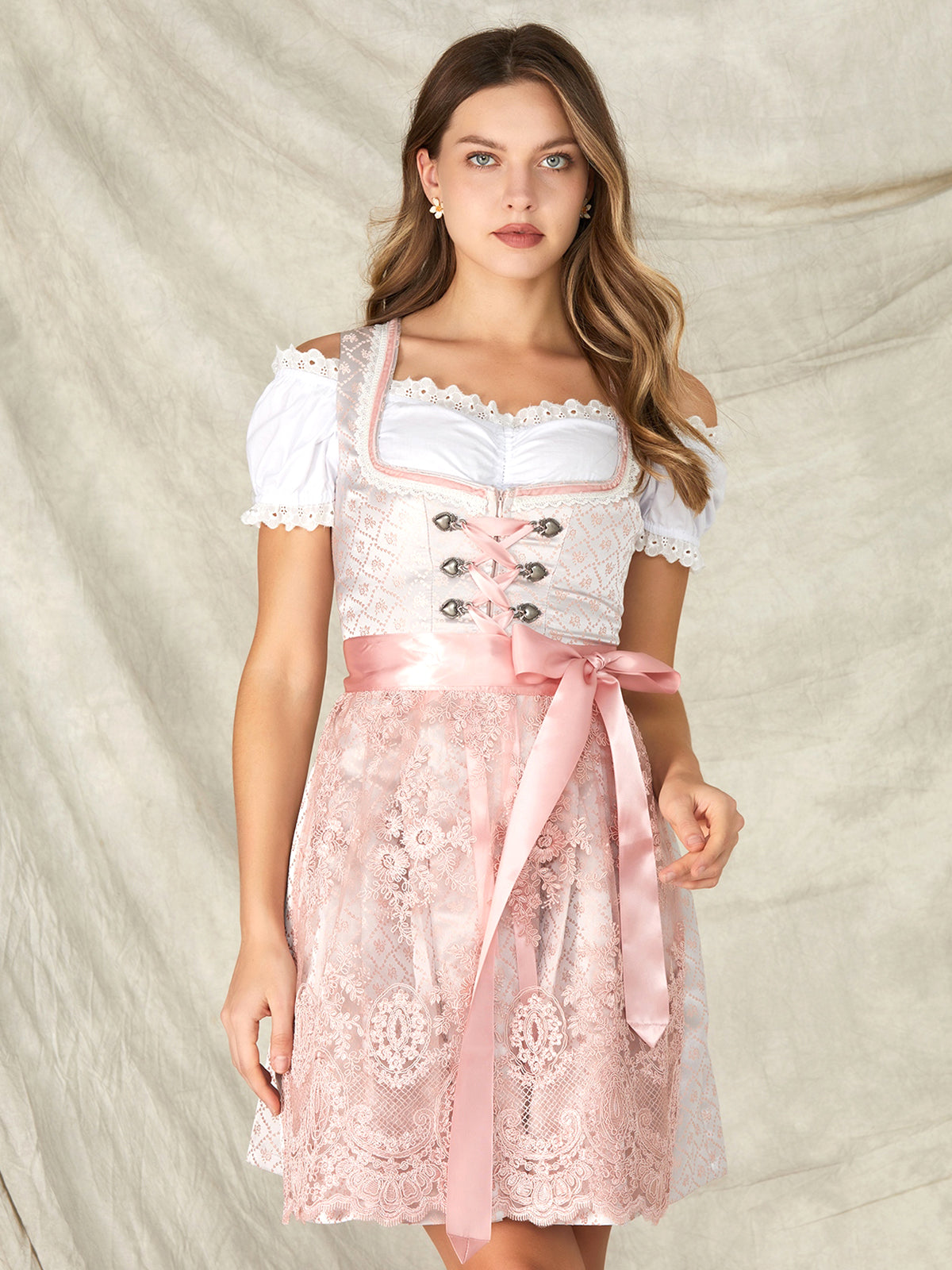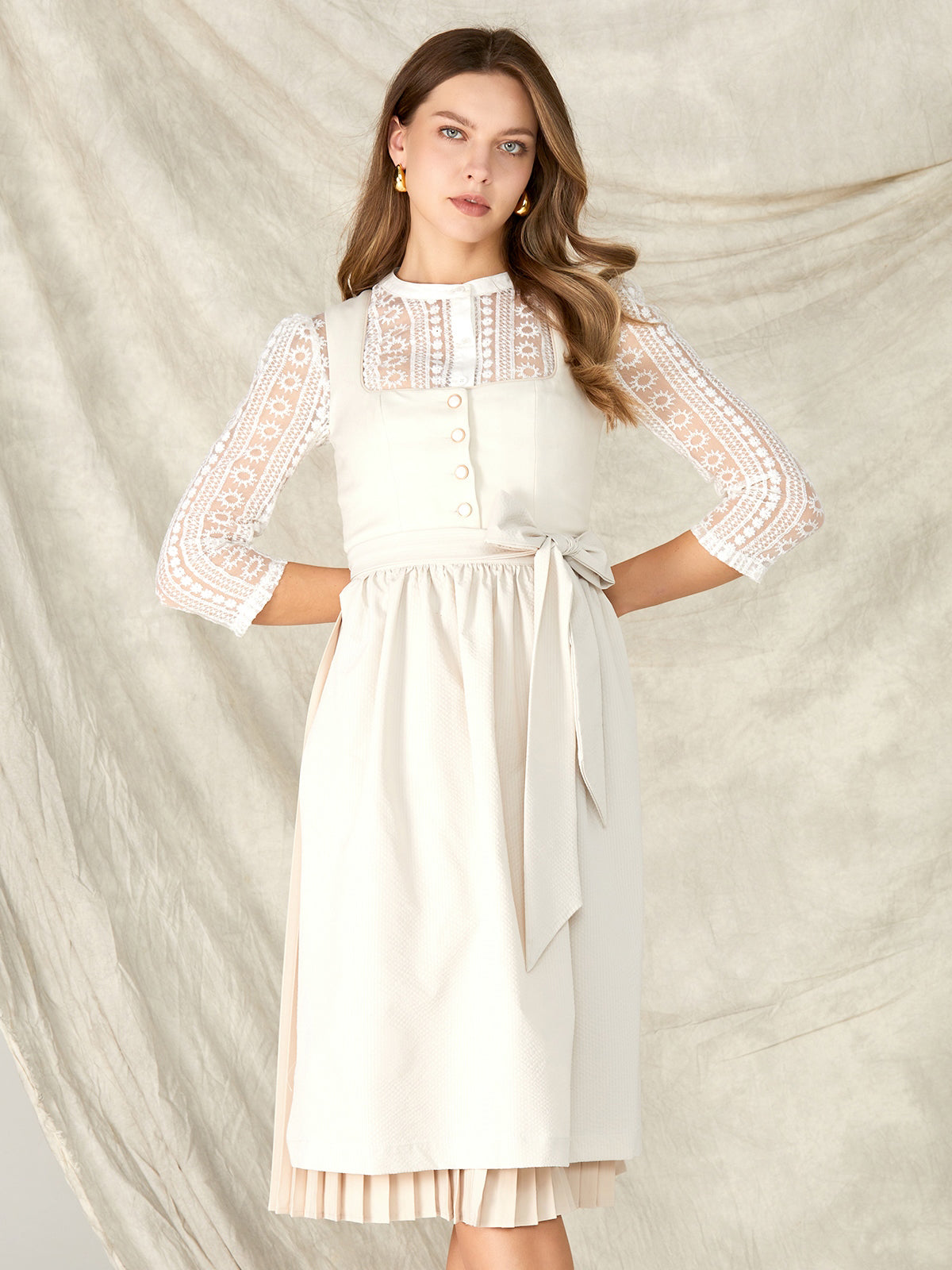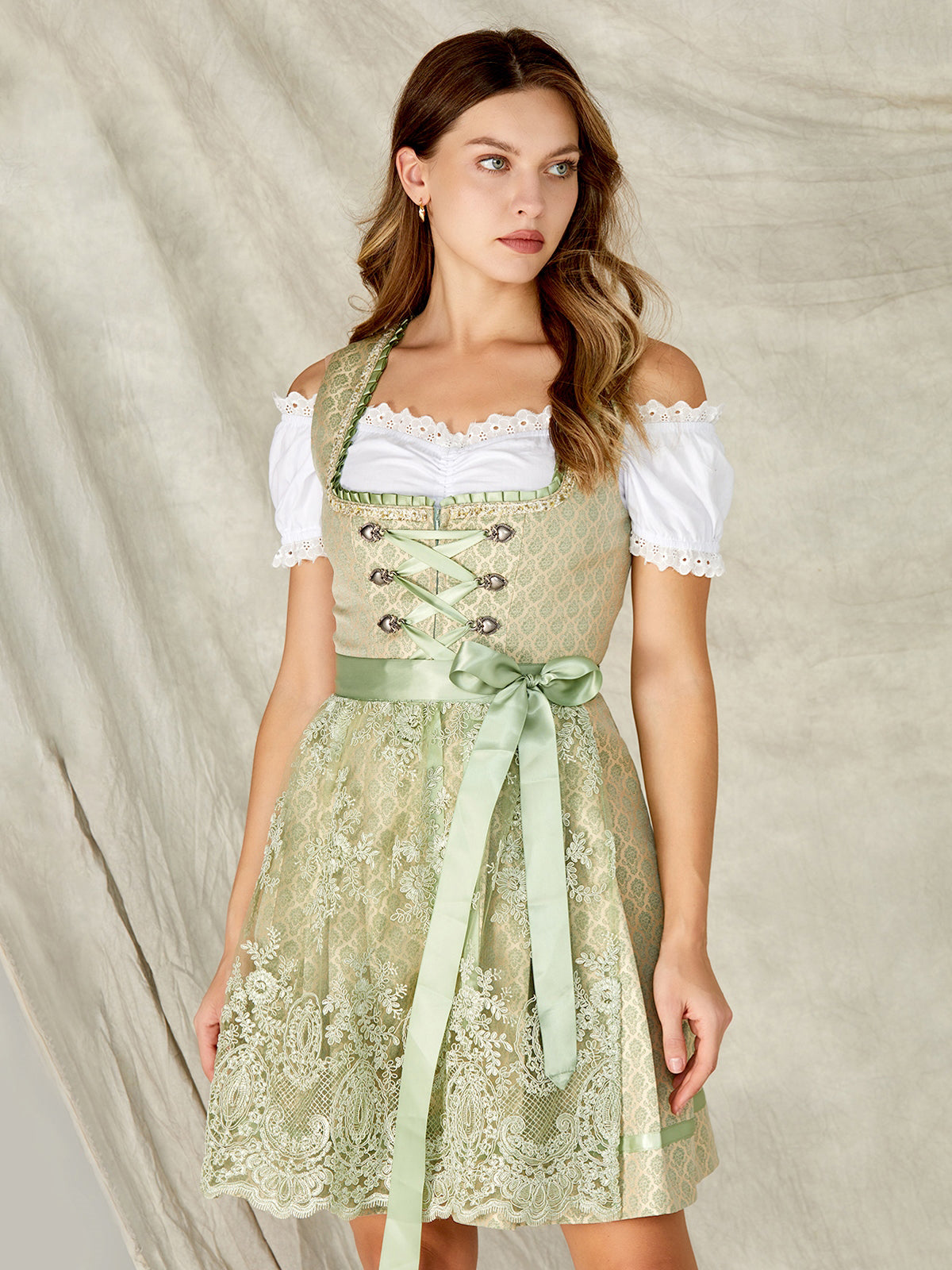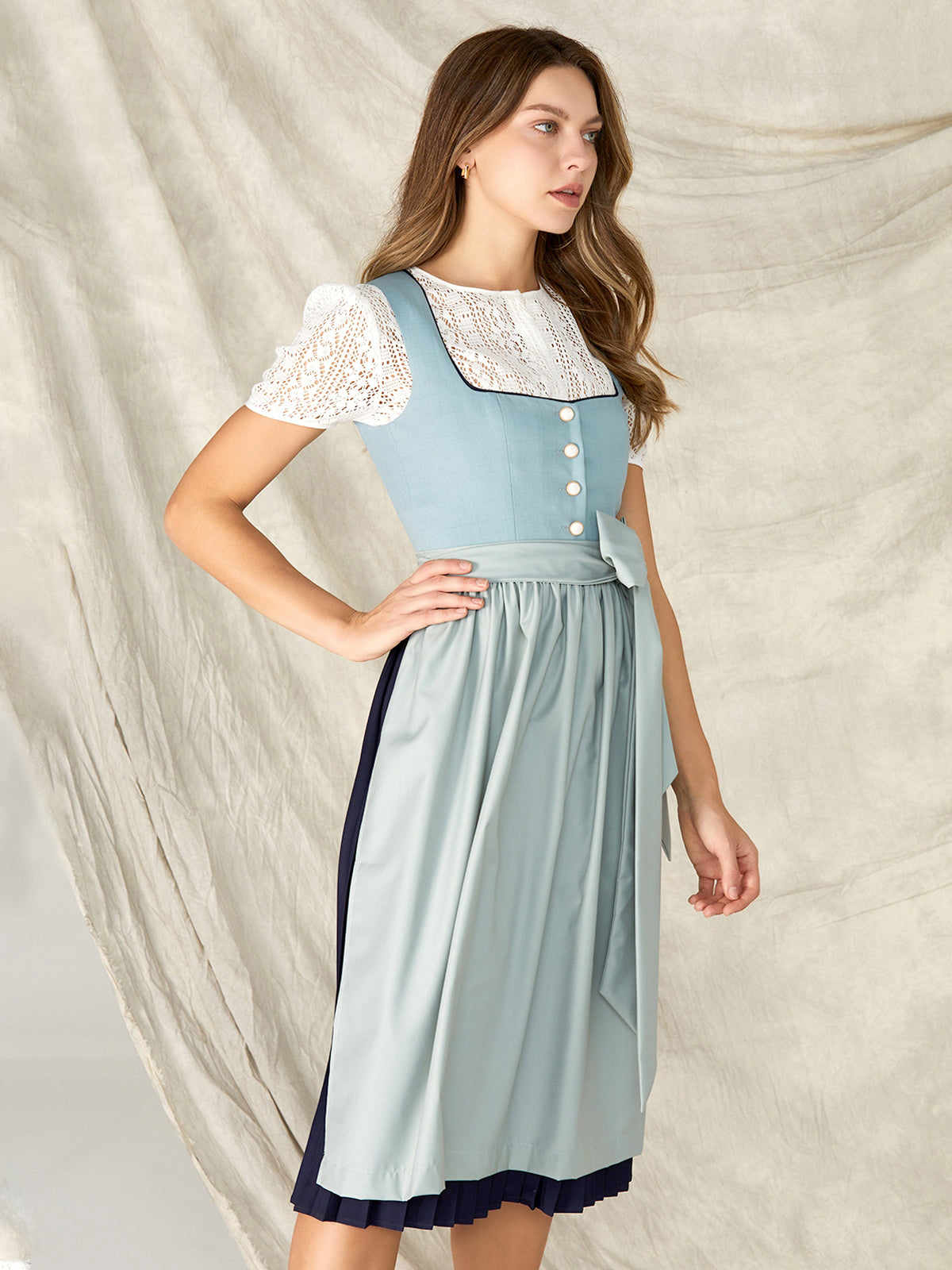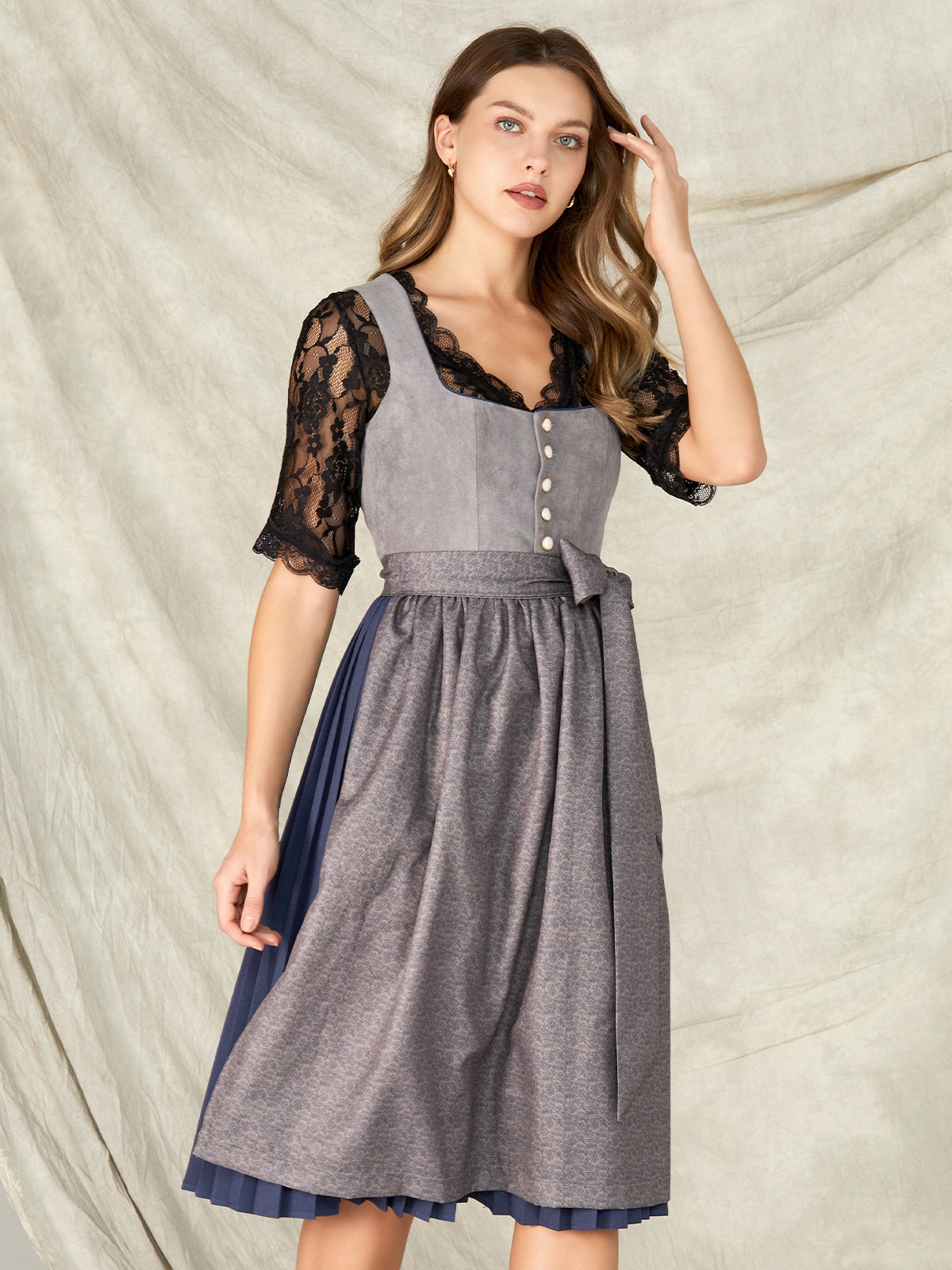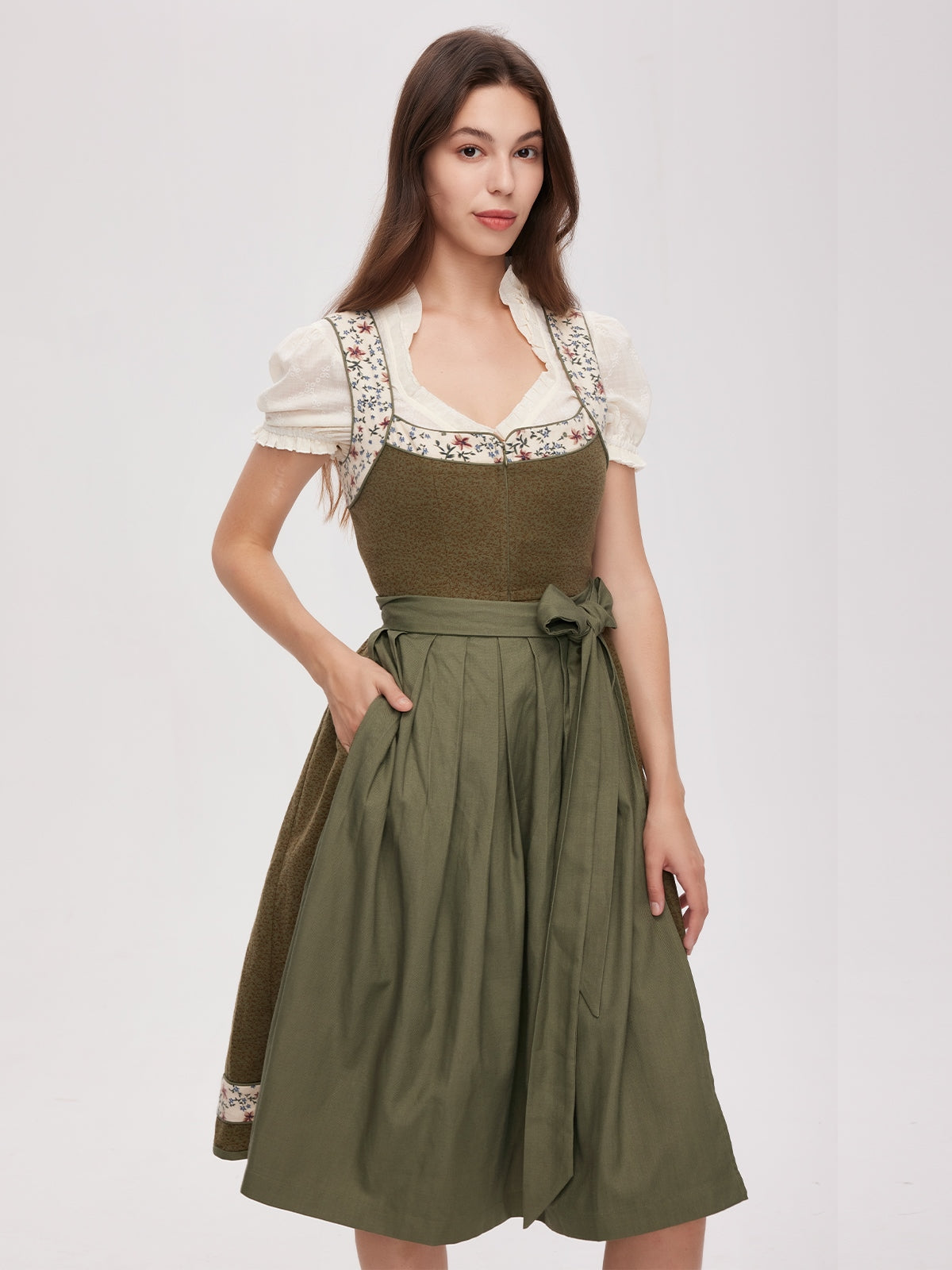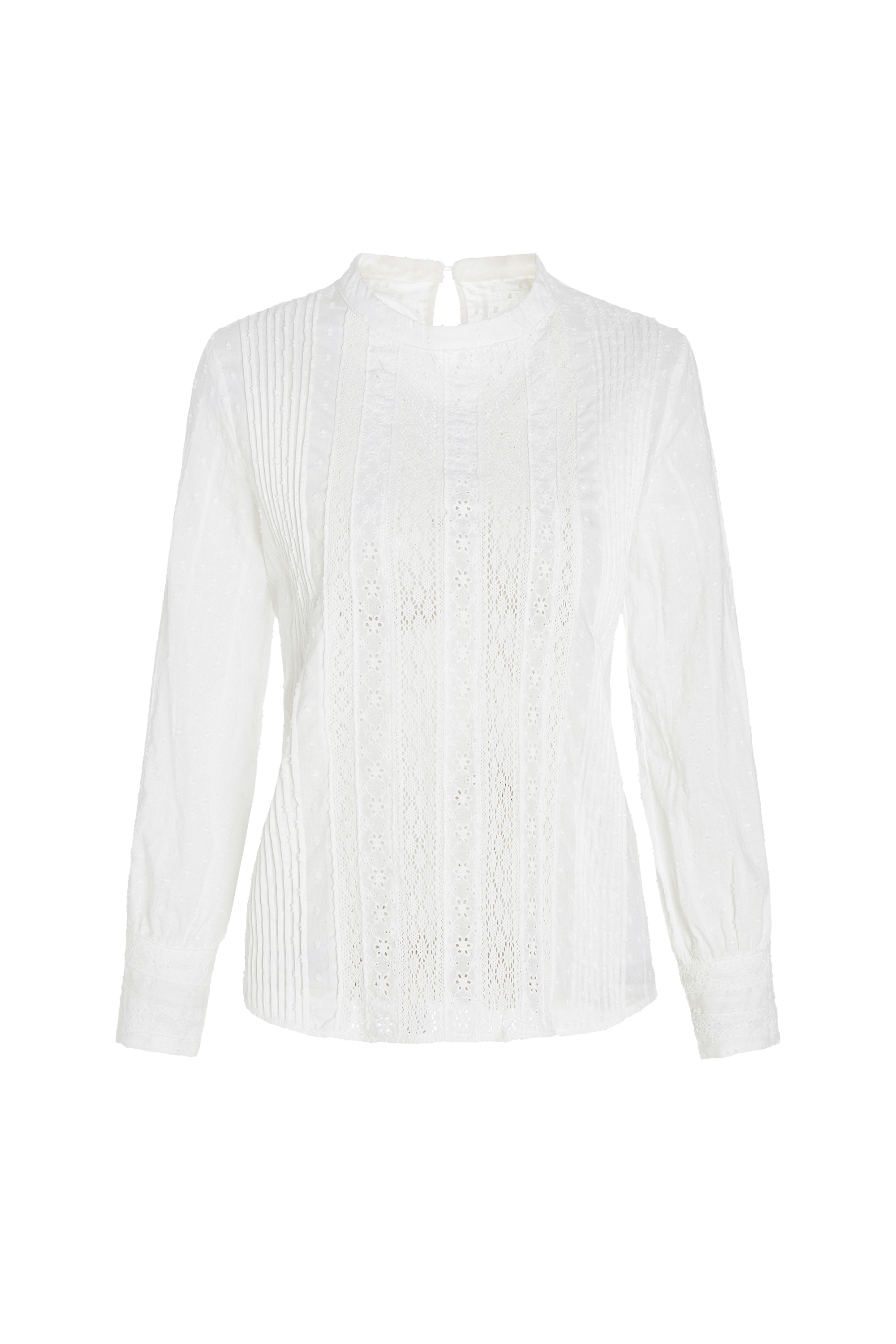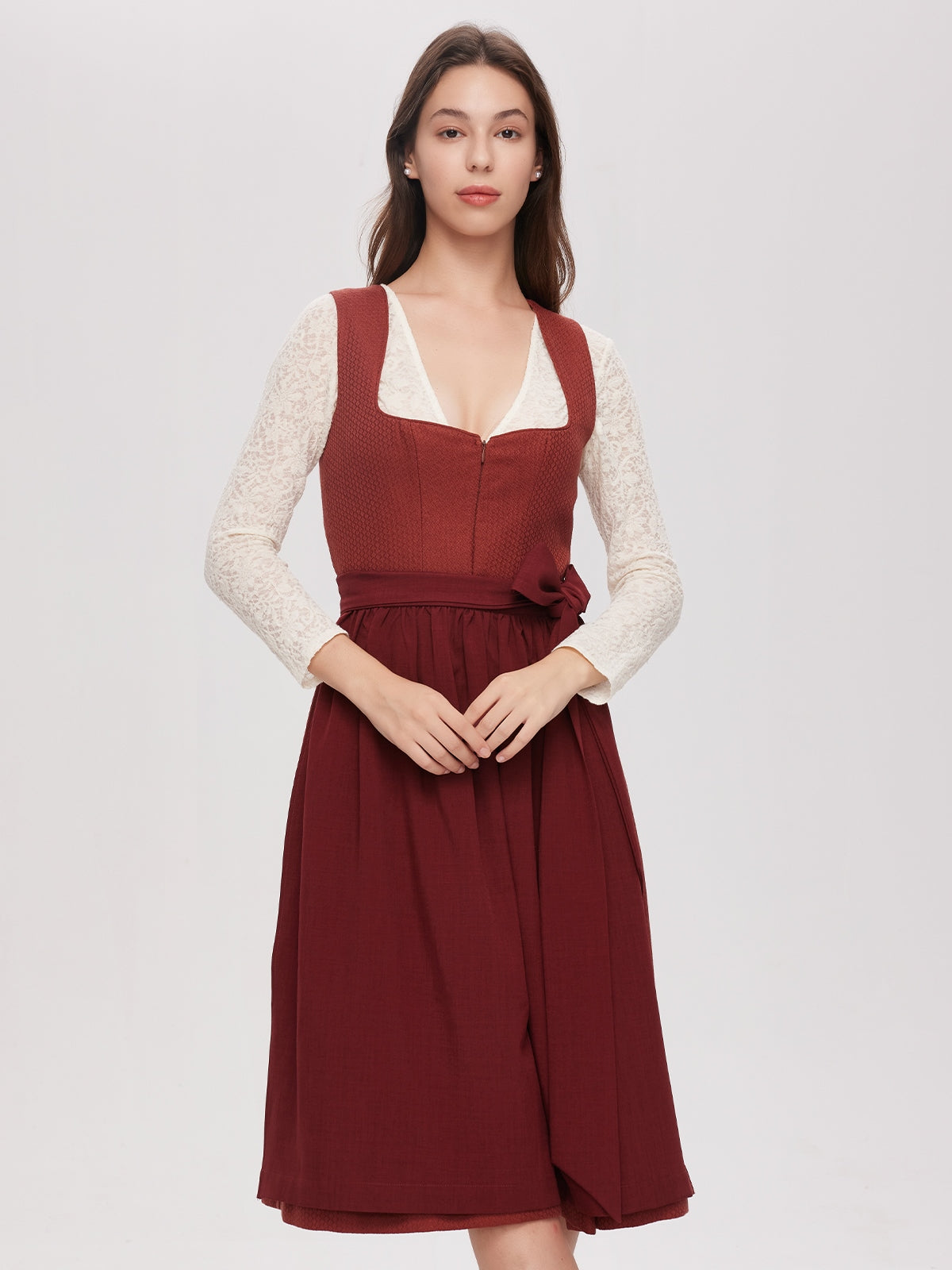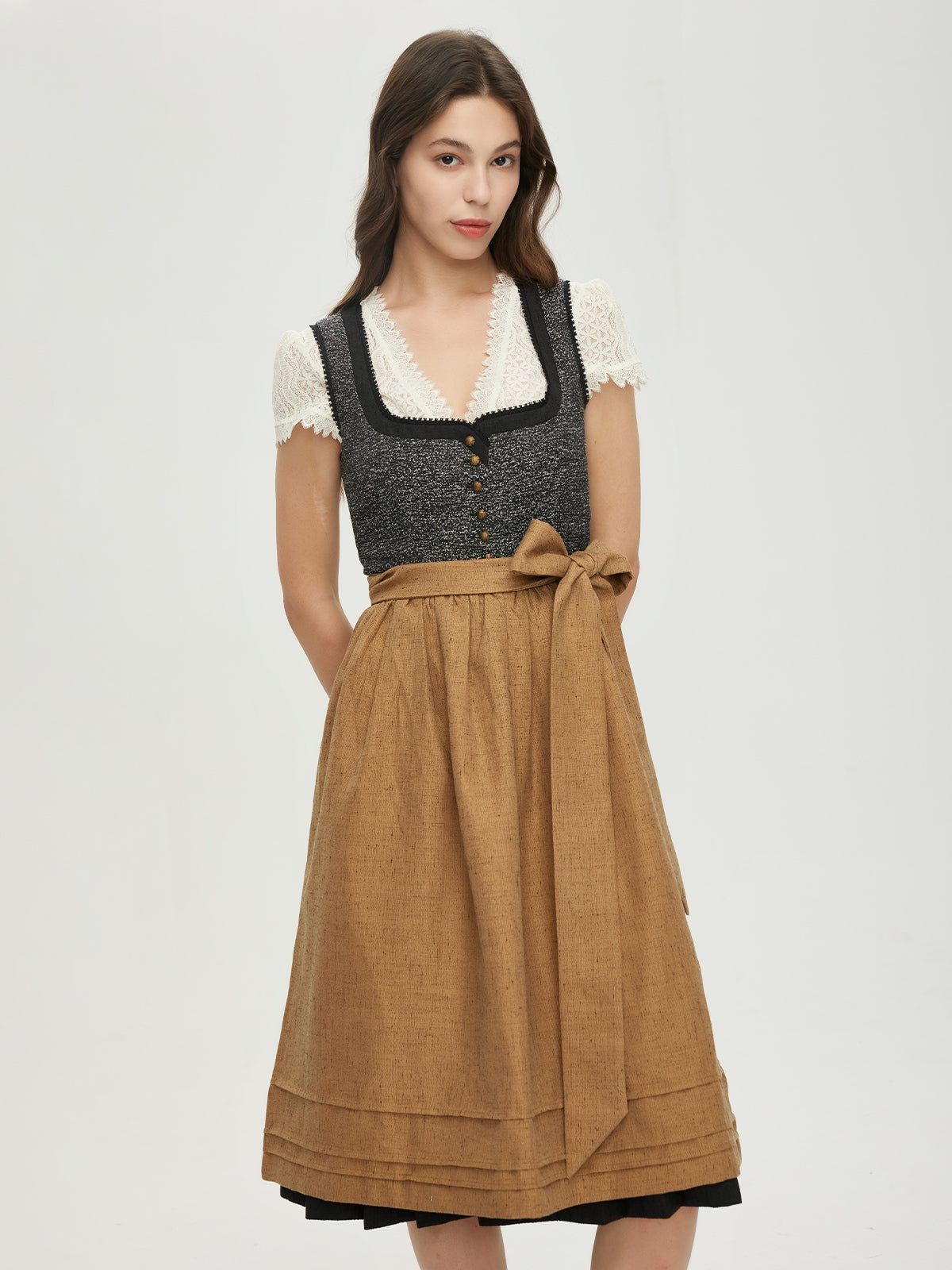Introduction: From the field to the catwalk
The dirndl—originally a simple work dress worn by Bavarian and Austrian peasant women—has undergone a remarkable metamorphosis. Today, it not only symbolizes Alpine tradition but is a global fashion phenomenon, reinterpreted by designers like Prada. This article explores the stages of this journey: from the 17th century through its political exploitation during National Socialism to modern dirndl sale trends and avant-garde adaptations.
1. The Roots: Workwear with Functionality (17th-18th Century)
In the 17th century, the dirndl was a three-piece, sturdy garment made of linen or wool, consisting of a bodice, skirt (traditional skirt for women), and apron. Its practical cut allowed freedom of movement when working in the fields.
- Key features:
- Tight waist : Accentuated by the bodice, but still comfortable.
- Long skirt : protection from cold and dirt.
- Simple colors : natural tones such as brown or dirndl blue (indigo).
Fun Fact : The apron served as a symbol – tied on the right, a woman signaled “taken”, tied on the left, “single”.
2. Romanticization: From the farm to the salons (19th century)
With industrialization and a return to rural idyll, the dirndl became a fashion accessory among the middle classes. Viennese society adapted it as "summer" clothing—now featuring silk, lace, and floral patterns.
- Rococo influences:
- Puff sleeves and shorter skirts for elegance.
- Dirndl blue was complemented by pastel shades.
- Cultural ambivalence: simultaneously a symbol of attachment to one’s homeland and a projection surface for urban longings.
3. Political appropriation: The Dirndl in National Socialism
Nazi propaganda stylized the dirndl as an "Aryan" cultural asset. Traditional costume associations standardized cuts to create a "purely German" aesthetic.
- Controversial Legacy:
- Instrumentalization : Simplified designs without “foreign” influences.
- Post-war period : The dirndl had to free itself from this burden.
Preparing for the next section : How did the leap from political symbol back to fashion happen?
4. The Renaissance: Prada and Postmodernism (21st Century)
In its 2019 spring/summer collection, Prada incorporated dirndl elements such as pleated skirts ( traditional skirts for women ) and bodices in futuristic colors. This homage proved that tradition can be avant-garde.
- High fashion meets tradition:
- Material mix : leather instead of linen.
- Silhouette : Tighter cuts for urban dynamism.
- Purchase impulses: Such collections fuel the demand for dirndl sale offers.
5. The Dirndl today: Between Oktoberfest and Couture
Modern variations range from classic dirndl blue designs to minimalist cuts for city wear.
- Trends 2025:
- Sustainability : Eco-certified cotton.
- Genderfluid : Unisex Dirndl-Inspired Pieces.
- Shopping tip: Online platforms offer Dirndl sale discounts of up to 40%.

